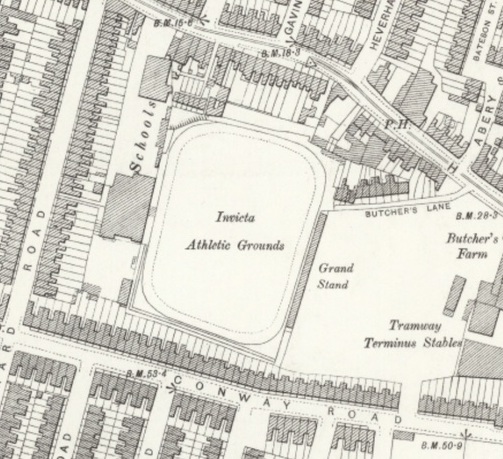

Mr Weaver built a new banked cinder bicycle track at Invicta in early 1891. The Sporting Life of May 2nd 1891 carried an announcement by the Invicta Cycling & Athletics Clubs that they would hold their First Grand Race Meeting on the new track May 16th 1891. The bicycle events at the meeting were a 1 mile Safety Bicycle race and a 1 mile Ordinary Bicycle event. HH Griffin was the handicapper. There were also two running races and a 440 yards dribbling competition. Two more Grand Race Meeting followed in June and August. The opening year of the track was busy, Woolwich Polytechnic club held their 3rd Annual sports there and Kent Unity held their annual athletics festival.
In 1892 the Spartan Harriers event drew a crowd of 8,000 in support of London hospitals and the Argus BC held a meeting. Spartan Harriers really lead the way at Invicta in 1893 holding eight well supported Saturday meetings. Arsenal left the Invicta Ground in 1893 after a rent dispute and went back to the Manor Ground, which is just a few hundred yards from Invicta.
The Woolwich Polytechnic CC started evening meetings at Invicta in 1894. The owner of the ground, Mr Weaver, must have felt the cost of Arsenal moving as he submitted plans in 1895 to develop the ground. Bicycle racing seems to have stopped at Invicta in 1905.
The ground was re-developed and the 1916 map shows the ground covered by housing around Mineral Street and Hector Street. Mark Andrews in his thearsenalhistory.com blog commented "you can still see the terracing in gardens of Hector Street at the intersection of Mineral Street. We were very lucky to knock on the door of a Mrs Patel, lovely Arsenal fan, who let us into the garden and we were able to stand on the terraces where our Arsenal predecessors had stood over 120 years ago. The concrete appears to the untrained eye to be in remarkably good condition."